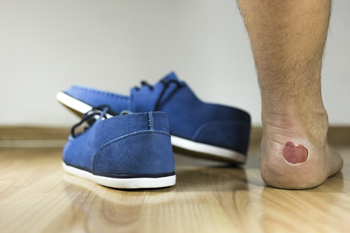Causes of Foot Blisters in Low Friction Scenarios and Soft Tissue Distortions

Foot blisters, those fluid-filled sacs that form on the skin, often arise from a combination of factors, shedding light on the intricate nature of their formation. In scenarios of low friction, prolonged moisture exposure, and ill-fitting footwear, the outer layer of the skin becomes susceptible to damage. Excessive moisture softens the skin, making it more prone to friction and subsequent blistering. Additionally, wearing tight or poorly cushioned shoes can create constant rubbing against the skin, aggravating the vulnerability. Soft tissue distortions, such as bunions or hammertoes, contribute to increased pressure on specific areas of the foot, intensifying the likelihood of blister formation. Understanding the interplay of these factors underscores the importance of proper footwear, moisture management, and addressing foot deformities to prevent blistering. By acknowledging the various causes of foot blisters, patients can take proactive measures to safeguard their feet and maintain optimal skin health. If you have developed blisters on your feet that have become infected, it is suggested that you confer with a podiatrist who can treat this condition, and offer effective blister prevention techniques.
Blisters may appear as a single bubble or in a cluster. They can cause a lot of pain and may be filled with pus, blood, or watery serum. If your feet are hurting, contact Janale Beckford, DPM of Tampa Podiatrists . Our doctor can provide the care you need to keep you pain-free and on your feet.
Foot Blisters
Foot blisters are often the result of friction. This happens due to the constant rubbing from shoes, which can lead to pain.
What Are Foot Blisters?
A foot blister is a small fluid-filled pocket that forms on the upper-most layer of the skin. Blisters are filled with clear fluid and can lead to blood drainage or pus if the area becomes infected.
Symptoms
(Blister symptoms may vary depending on what is causing them)
- Bubble of skin filled with fluid
- Redness
- Moderate to severe pain
- Itching
Prevention & Treatment
In order to prevent blisters, you should be sure to wear comfortable shoes with socks that cushion your feet and absorb sweat. Breaking a blister open may increase your chances of developing an infection. However, if your blister breaks, you should wash the area with soap and water immediately and then apply a bandage to the affected area. If your blisters cause severe pain it is important that you call your podiatrist right away.
If you have any questions, please feel free to contact our office located in Tampa, FL . We offer the newest diagnostic and treatment technologies for all your foot care needs.
More about Blisters
Blisters are pockets of fluid that occur under the top layer of your skin. These fluid pockets are usually filled with pus, blood, or serum. Blisters may itch or hurt and can appear as a single bubble or in clusters.
The most common types of blisters are friction blisters. This type of blister may be caused by wearing shoes that are too tight. Friction blisters can also occur on the hands. A change in temperature may also cause blisters on the feet. In the freezing air, frostbite on your toes can lead to blisters, as well as sunburn from hot weather.
The best way to treat a blister is to keep it clean and dry. Most blisters will get better on their own. Once the skin absorbs the fluid within the blister, it will flatten and eventually peel off. You should avoid popping your blister unless you podiatrist does it for you. Additional treatment options include applying an ice pack to the blister or using over-the-counter blister bandages to cover the affected area.
If your blister becomes discolored, inflamed, or worsens it is advised that you speak to your podiatrist. Blisters that are yellow, green, or purple may be infected and require immediate medical attention. Blisters that are abnormally colored may be a sign of a more serious underlying health condition such as herpes.
